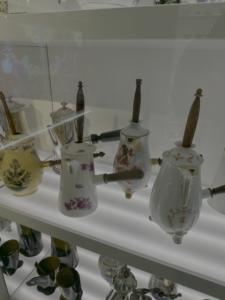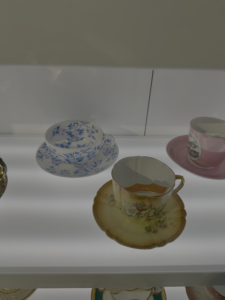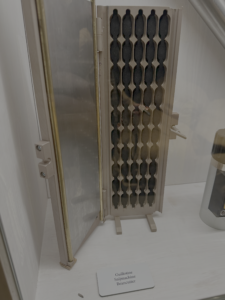Whisks, Gods, and Guillotines: The Fascinating History of Chocolate
The story of the Brussels Chocolate Museum is an amazing journey through the history of chocolate, starting with the Mayans and traveling through time to Spain, France, and Belgium. When you first enter, you are greeted by a stunning Mayan temple and a realistic person harvesting a cacao tree. As you walk through the museum, audio guides explain how valuable chocolate was to the indigenous people and how the beans were once used as currency by the Aztecs and Mayans.

The cacao tree’s ability to thrive in the South American climate allowed many early civilizations to prosper from its beans. As cacao became more valuable, these groups created specific dishes and pots for it, even developing a Mayan word and symbol for cacao—”Kakawa”—which appeared on their pottery. This term was based on their god Kukulkan, the feathered serpent, who, according to legend, gave cacao to the people after creation. The indigenous people used these pots for “bitter water”, the first known chocolate drink.
To create the perfect frothy texture, they also invented a special foaming stick, which they would spin between their hands to mix and aerate the chocolate. When chocolate reached Europe, the French fine-tuned both the chocolate drink and how it was made. They developed more elaborate and ornate pots, known as chocolatières, incorporating the foaming stick as an integral part of the design. These pots featured a hole in the lid through which a wooden whisk could be spun to create the perfect froth. The intricate craftsmanship of these vessels not only enhanced the texture and presentation of the drink but also became a status symbol among the upper class, reflecting wealth and sophistication.

Continuing through the museum, you travel through time to the Age of Exploration, witnessing cacao spread globally. My favorite part was seeing the progression of cocoa pots and cups in Europe, from simple copper designs to intricate porcelain and silver, visually representing how chocolate drinks became a luxury for the upper class. The French even created travel versions of everything, including special cups for drinking hot chocolate. One problem hot chocolate drinkers often faced was that the drink would get caught in their mustaches, causing a mess. The solution? A clever extra piece on top of the cup to cover the mustache.

Another fascinating invention I learned about was the bean cutter—or “bean guillotine,” as I like to call it—which is used to cut the beans in half to access the important inside. As I explored the museum, I couldn’t help but marvel at the engineering innovations that shaped the chocolate-making process. The intricate designs of the chocolatières and the clever inclusion of the whisk in the pot lid show how engineering solutions were used to enhance the functionality and aesthetic of the high-end everyday objects. The museum’s immersive experience allowed me to truly appreciate the rich history and cultural significance of chocolate, from its Mayan origins to its evolution as a beloved treat enjoyed around the world.
Written By: Melissa B.
Bermudez, E. (2020, February 28). KaKaWa, Chocolhaa, Xocolatl, Cacao. . .It All tastes Like Chocolate! – Inter-American Foundation. Inter-American Foundation – Empowered Communities, Sustainable Results. https://www.iaf.gov/content/story/kakawa-chocolhaa-xocolatl-cacaoit-all-tastes-like-chocolate/
Righthand, J. (2022, July 21). A brief history of the chocolate pot. Smithsonian Magazine. https://www.smithsonianmag.com/smithsonian-institution/brief-history-chocolate-pot-180954241/

Mmmmmmmmmmmmmmmmmm… Chocolate